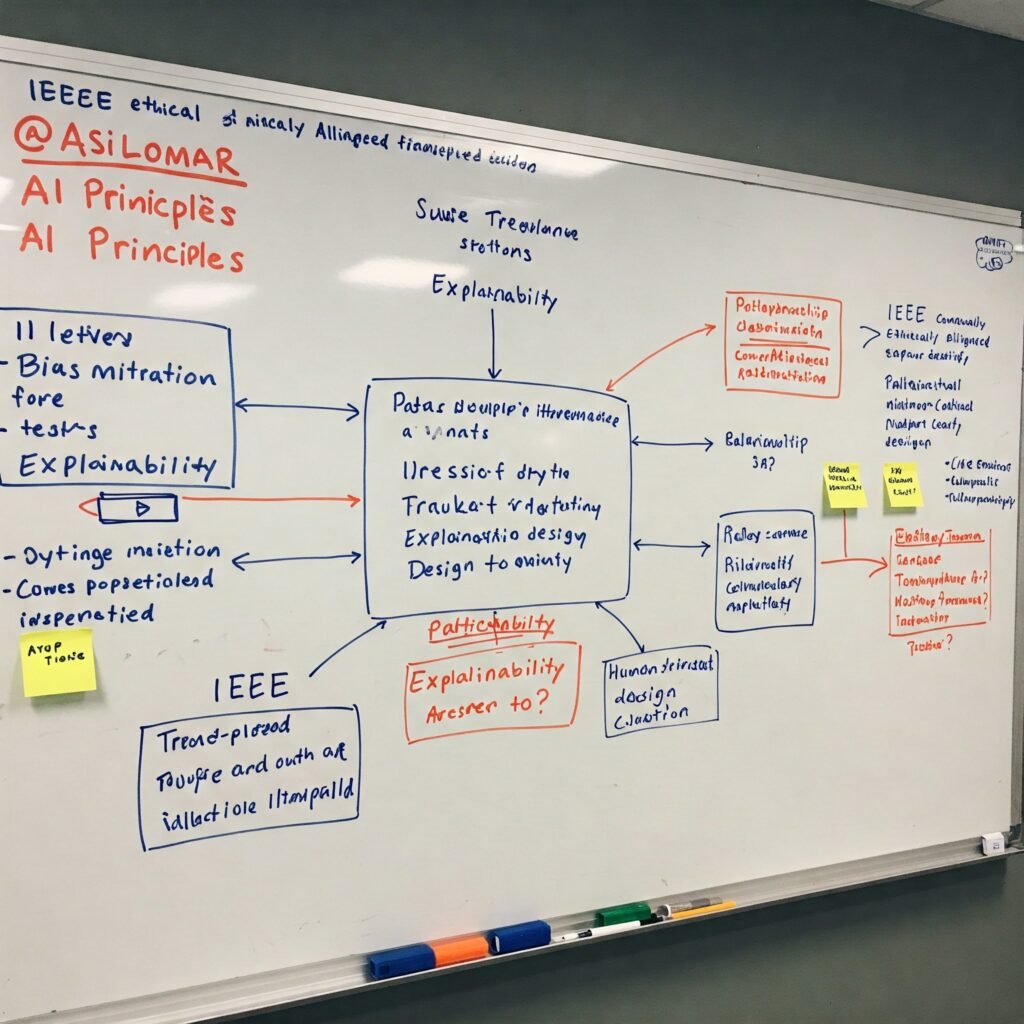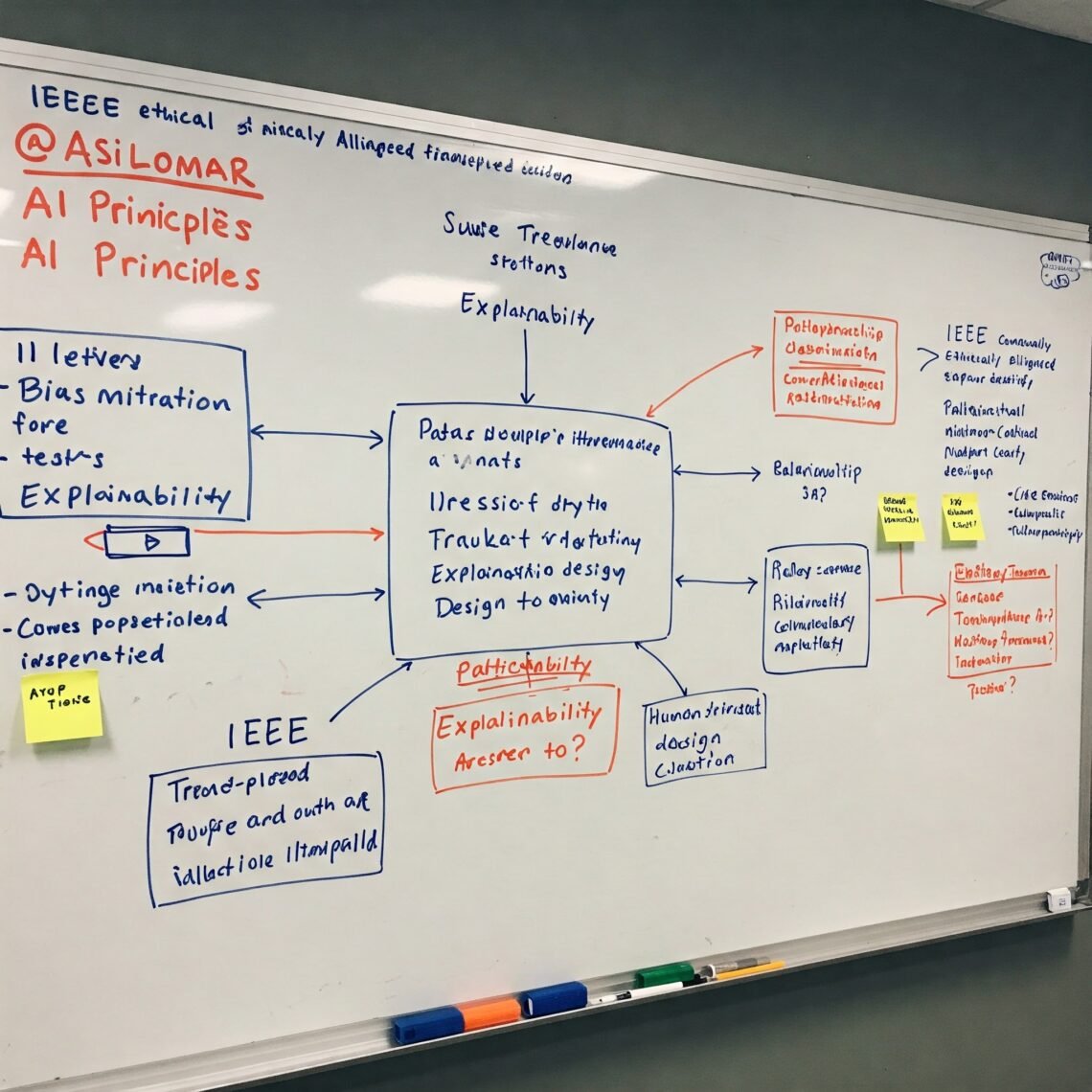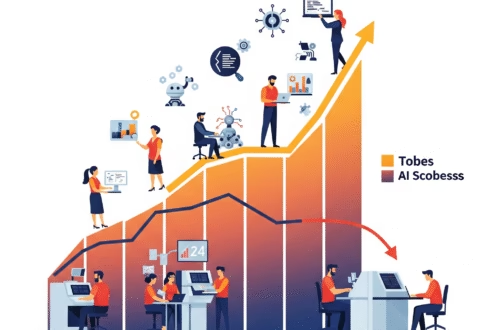Navigate the principles, challenges, and global standards shaping ethical AI development.
AI Ethics Frameworks: Building Trust in the Age of Intelligent Machines
As artificial intelligence reshapes industries, ethical frameworks have emerged as critical tools to ensure AI systems align with societal values. These frameworks provide actionable guidelines to address risks like bias, privacy violations, and accountability gaps. From healthcare to finance, adopting ethical AI practices is no longer optional-it’s a strategic imperative.

In the age of intelligent machines, ethics is the compass that guides innovation toward a future we can trust!!
– Dev
Key Principles of AI Ethics
Most global frameworks converge on six core principles:
- Transparency: Disclose how AI systems make decisions (e.g., explainable AI models).
- Fairness: Mitigate algorithmic bias through rigorous testing and diverse training data.
- Accountability: Assign clear responsibility for AI outcomes, including errors or harms.
- Privacy: Protect user data with techniques like federated learning and anonymization.
- Safety & Reliability: Ensure systems perform consistently under varied conditions.
- Human Oversight: Maintain human control over critical decisions, especially in high-risk domains.
Major Global Frameworks
1. IEEE Ethically Aligned Design
This engineering-focused framework emphasizes Ethics by Design, requiring interdisciplinary review boards to assess risks at every development stage. Unique features include:
- Adversarial testing to uncover hidden biases
- Ethical risk modeling during system design
- Public participation in AI governance processes
2. EU’s Ethics Guidelines for Trustworthy AI
The EU’s framework mandates three pillars for compliance:
| Lawfulness | Ethics | Robustness |
|---|---|---|
| GDPR compliance | Respect for human autonomy | Technical cybersecurity |
| AI Act requirements | Prevention of harm | Fallback plans for failures |
3. OECD AI Principles
Adopted by 45+ countries, this framework prioritises:
- Inclusive growth and sustainable development
- Multi-stakeholder collaboration
- Periodic algorithmic audits
Implementing Ethical AI: A 5-Step Process
- Risk Assessment: Classify AI systems by impact level (e.g., using the EU’s risk pyramid).
- Bias Mitigation: Use tools like IBM’s AI Fairness 360 to detect demographic disparities.
- Documentation: Maintain detailed records of data sources, model choices, and testing results.
- Third-Party Audits: Engage organizations like Zendata for compliance verification.
- Continuous Monitoring: Implement real-time dashboards to track model drift and performance.
Challenges in Ethical AI Adoption
Organizations face three key hurdles:
- Conflicting Standards: Regulations vary by region (e.g., EU vs. India’s DPDP Act).
- Technical Complexity: Explaining black-box models like deep neural networks.
- Cost: Implementing ethics tools can increase development costs by 15-30%.
The Future of AI Ethics
Emerging trends include:
- Automated Compliance: AI tools that self-audit for regulatory adherence
- Global Certification: ISO-style standards for ethical AI systems
- Ethics-as-a-Service: Platforms offering real-time bias detection
Resources
Stay in the loop











One comment on “AI Ethics Frameworks: Trust in the Age of Intelligent Machines”